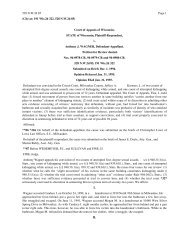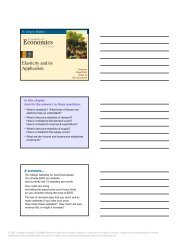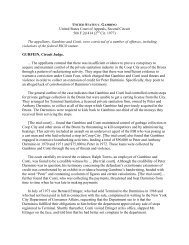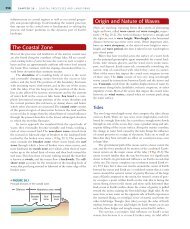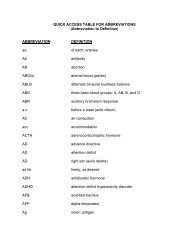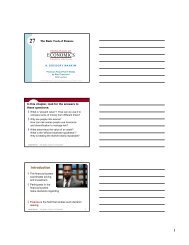Simulink Tutorial on Digital Modulation Methods - Cengage Learning
Simulink Tutorial on Digital Modulation Methods - Cengage Learning
Simulink Tutorial on Digital Modulation Methods - Cengage Learning
You also want an ePaper? Increase the reach of your titles
YUMPU automatically turns print PDFs into web optimized ePapers that Google loves.
13.9. 16-ARY QUADRATURE AMPLITUDE-SHIFT KEYING (16-QAM) 627<br />
SOLUTION<br />
The binary representati<strong>on</strong> of the decimal numbers yields a Gray mapping. The most<br />
likely error event for sufficiently high SNR is detecting a c<strong>on</strong>stellati<strong>on</strong> point with minimum<br />
Euclidean distance to the actually transmitted c<strong>on</strong>stellati<strong>on</strong> point. With Gray<br />
mapping this error event results in <strong>on</strong>ly <strong>on</strong>e bit error. Assigning a single bit error to the<br />
more likely error events and multiple bit errors to less likely error events minimizes the<br />
average bit error probability. A Gray mapping can also be found for higher-order QAM.<br />
Start the simulati<strong>on</strong>. Since the signals in the quadrature comp<strong>on</strong>ent look like the<br />
respective in-phase signals, <strong>on</strong>ly the in-phase signals are depicted in Figures 13.116<br />
to 13.125 for noiseless transmissi<strong>on</strong>. For noisy transmissi<strong>on</strong> the receiver scatter plot<br />
looks similar to Figure 13.121.<br />
Figure 13.116: In-phase source signal a_c(t)<br />
Figure 13.117: In-phase baseband signal s_c(t)<br />
Figure 13.118: In-phase comp<strong>on</strong>ent u_c(t) of the transmitted signal<br />
Figure 13.119: Transmitted signal u(t)<br />
© 2013 <strong>Cengage</strong> <strong>Learning</strong>. All Rights Reserved. May not be scanned, copied or duplicated, or posted to a publicly accessible website, in whole or in part.



